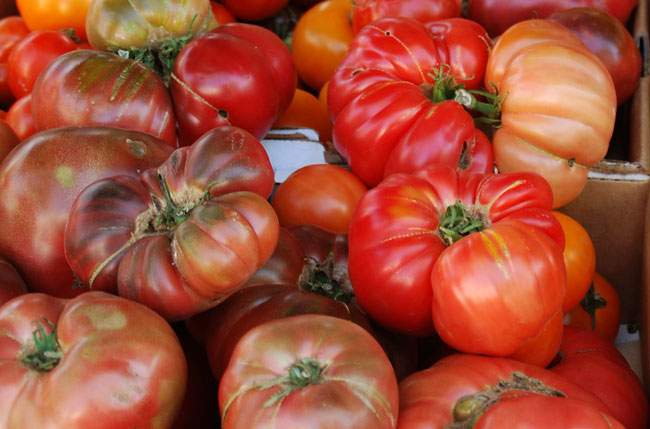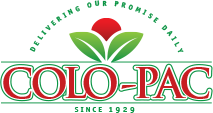
Heirloom is a broad category of tomato that has become immensely popular in the last decade or so. Heirloom tomatoes are considered distinct from other commercial tomatoes based on their genetic type. Modern commercial tomatoes are usually considered hybrid in terms of their genetics, meaning they are bred by combining two separate breeds of tomato, with the intention of producing a tomato that is resistant to certain types of hazards. For instance, the Early Girl hybrid was developed to thrive in dry climates. Heirloom tomatoes, alternatively, are grown from the seeds of tomato breeds that have stayed the same for over fifty years, and were developed using natural breeding techniques. Some commercial breeds of tomatoes, such as Romas and grape tomatoes, are not hybrids, but aren’t considered heirlooms because they haven’t stayed genetically consistent for over fifty years. There are a huge variety of heirloom tomatoes, of all different sizes, shapes and colors. The most common breeds of heirloom tomatoes are the large round heirloom tomatoes, including the massive brandywine tomato, and the mini heirlooms that resemble cherry tomatoes. Most heirloom tomatoes are red when ripe, but many heirlooms develop various other colors, such as yellow, orange, green stripes and even black. Heirloom tomatoes are often considered to be much more flavorful than typical tomatoes. This is thought to be the case because the cultivation of tomatoes that are weather resistant, and have uniform red, smooth skin comes at the cost of sacrificing the fruity sweet flavor of older varieties of tomatoes. Heirloom tomatoes are grown both conventionally and organically.
Any recipe that calls for tomatoes is a perfect opportunity to experiment with heirloom tomatoes. Because heirloom tomatoes tend to vary in their flavor, the results of cooking with heirlooms can sometimes yield different results. Often, heirlooms are fruitier and sweeter than typical commercial tomatoes, so slightly more salt may be necessary when preparing sauces with them. In tossed salads, chopped large heirlooms or whole mini heirlooms can be added for a burst of color and flavor. A very simple, very flavorful sandwich can be made with large heirlooms. All that is needed is two slices of white bread, very thickly sliced heirloom tomatoes, salt, pepper, and high quality mayonnaise. Spread mayo on each piece of bread, arrange the thick tomato slices, lightly salt and pepper, and serve with a side like coleslaw or baked beans. This sandwich is deceptively flavorful and filling. Mini heirlooms can be used in much the same ways as grape and cherry tomatoes, such as an appetizer, salad topping, or roasting.
It can be a little tricky to pick a good heirloom tomato. It’s not quite as straightforward as picking a typical commercial tomato, as color is not always a reliable indicator of ripeness in heirloom tomatoes. Instead, rely on how the tomato feels. The softer the tomato, the more ripe it is, and a properly ripe tomato will still be firm, but slightly soft to the touch. Heirloom tomatoes, especially large ones, are often lumpy and not all that pretty looking, but this is nothing to worry about. Even the ugliest of heirloom tomatoes will taste perfectly fine. Heirloom tomatoes will stay fresh for up to a week, depending on how ripe they are. It is recommended to keep heirloom tomatoes at room temperature rather than refrigerating. Storing tomatoes at temperatures colder than fifty degrees causes the sugars in the tomato to break down, causing the tomato to become starchy and coarse in texture. Always thoroughly wash tomatoes before use.


 BACK TO PRODUCTS
BACK TO PRODUCTS